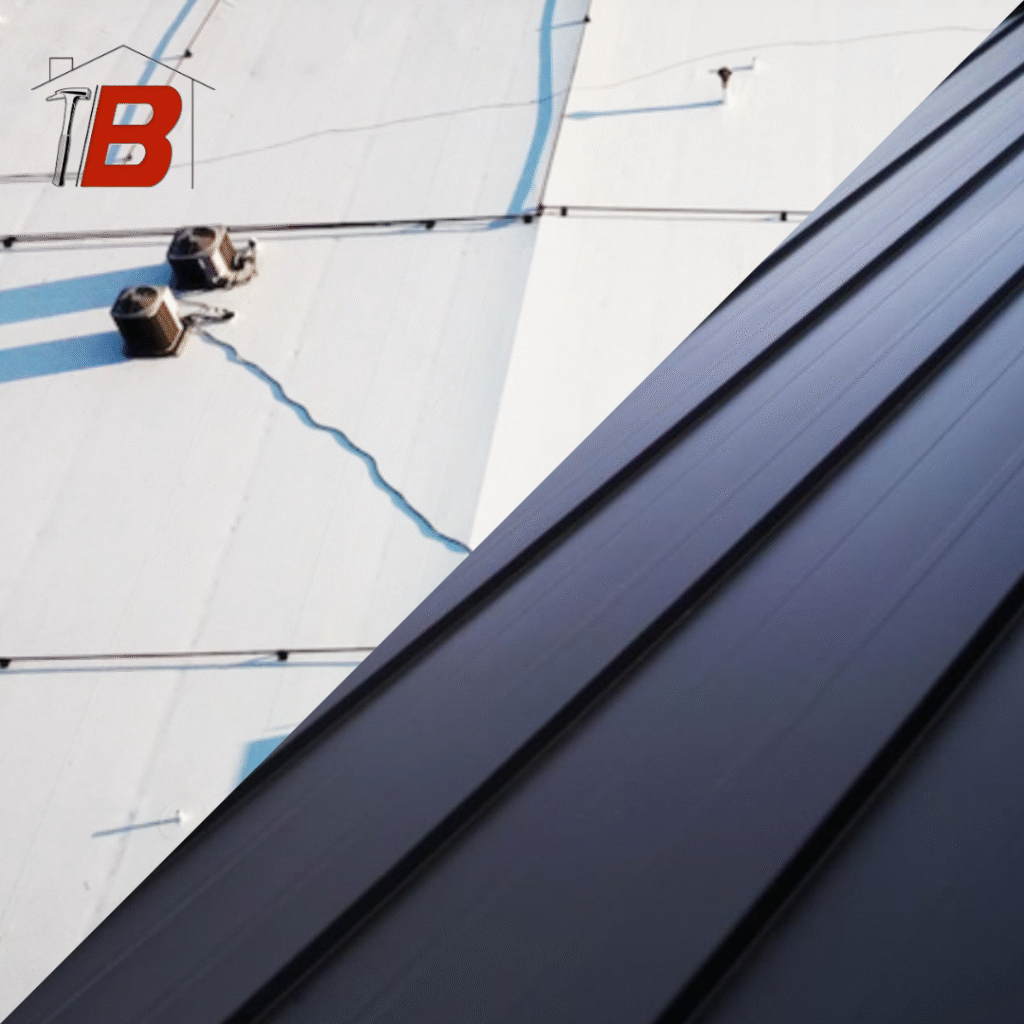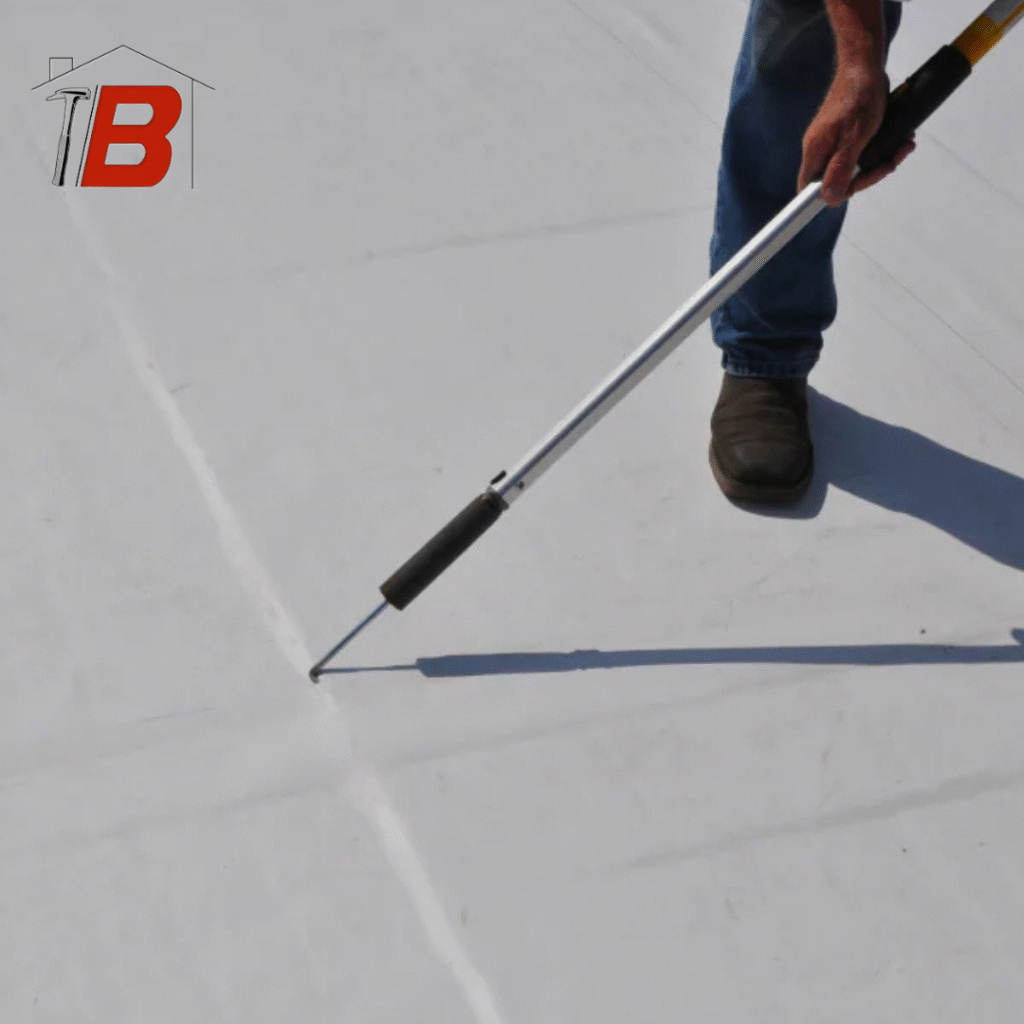If you’re in Louisiana and leaning toward metal because “it just lasts longer,” this guide is for you. TPO has evolved into a proven, high-performance commercial roofing system when it’s designed and installed to spec — and it often delivers a better total cost of ownership, faster installs, and lower heat load for your building than metal. Below, we unpack the most common objections, what actually causes failures, and how to evaluate TPO versus metal with real, on-the-roof criteria.
Quick context for Louisiana
- Climate realities: Extreme UV, persistent heat, thermal cycling, heavy rain, and hurricane-force winds put every roof system under stress. Performance here is less about brand and more about detailing, attachment, edge securement, and contractor discipline.
- Decision drivers for owners: Downtime risk, occupant comfort, energy costs, wind performance at edges/corners, moisture control, lifecycle cost, and warranty recourse if something goes wrong.

The big misconception: “TPO fails — metal doesn’t”
You’ve probably heard: seams peel, membranes yellow, moisture gets trapped, and coatings on top of TPO are a band-aid. Those issues do show up in the field — but most trace back to spec deviations or poor prep, not the TPO platform itself.
Common “failure” stories and what’s really behind them:
- Peeling or seam failure: Usually improper hot-air welding temps, contamination, rushing welds in windy/humid conditions, or skipping probe/peel tests. Corrective: follow manufacturer welding windows, do test welds for the day’s conditions, probe seams, and repair at punch-list.
- Yellowing/chalking: UV exposure can cause surface changes over time; this is cosmetic and doesn’t equal functional failure. Dirt pickup is common near HVAC and industrial exhausts; maintenance cleaning helps. Many TPOs, including premium white membranes, maintain reflectivity per ENERGY STAR/CRRC data.
- Moisture encapsulation/blistering: Typically from wet substrate left in place or trapped construction moisture. Corrective: infrared scan and core cuts during due diligence, replace wet insulation, and include a proper vapor retarder when interior humidity dictates.
- Perimeter blow-off or fluttering: Under-fastening at edges/corners, wrong plate patterns, or inadequate edge metal. Corrective: use manufacturer perimeter/corner fastening patterns and ANSI/SPRI/FM-rated edge systems matched to your building pressures.
Bottom line: When contractors follow manufacturer specifications (membrane thickness, fastening density, welding protocol, flashing heights, substrate prep, and edge metal details), these “flaws” largely disappear.
NDL (No Dollar Limit) manufacturer warranties — why they matter for TPO
- What it is: An NDL warranty is a manufacturer-backed guarantee that covers warranted leaks arising from manufacturing or installation defects for the full term, without a dollar cap on repair costs, provided the system was installed to the manufacturer’s specifications by an authorized contractor and passed inspection.
- Why owners should care: NDL requires adherence to published details and typically includes manufacturer site inspections, creating real accountability for correct installation — the single most important factor in Louisiana’s high-wind, high-UV environment.
- GAF example: On qualifying EverGuard TPO assemblies, GAF offers full-system/NDL-type guarantees when installed by GAF Certified or Authorized contractors and inspected per GAF requirements. Longer terms (e.g., 20–30+ years) generally require thicker membranes (e.g., 60–80 mil) and compliant assemblies, including approved insulation/cover board, edge metal, and fastening/welding details. Ask your contractor to specify the exact GAF guarantee type, term, and assembly requirements being proposed, and to confirm that the project will receive GAF inspection and final approval for issuance. See GAF’s EverGuard TPO technical data, application specs, and Commercial Guarantees program literature for eligibility, term options, and coverage differences between material-only and full-system/NDL guarantees.
Practical owner tip: Make NDL issuance a milestone in your contract (punch-list completion and manufacturer approval required prior to final payment). That aligns incentives and ensures spec compliance.
TPO vs. Metal: point-by-point for Louisiana owners
- Durability and wind: Properly fastened TPO with FM-approved edge systems and perimeter/corner fastening patterns can meet or exceed required wind uplift ratings for Gulf Coast exposures. Metal is strong, but panel length, clip spacing, and edge detailing are just as critical — both systems can fail at edges if details are wrong.
- Water tightness: Fully adhered or mechanically attached TPO with welded seams is a continuous waterproofing layer. Standing-seam metal relies on panel geometry, clips, underlayment, and seam sealants; movement at fasteners and penetrations can introduce periodic maintenance points.
- Heat load and energy: White TPO significantly reduces roof surface temps and cooling loads. Bare metal can reflect but often gains heat; cool-pigmented coatings exist but add cost and maintenance. For many low-slope commercial roofs, TPO offers the strongest cooling impact out of the box.
- Speed and disruption: TPO installs are typically faster on large, low-slope roofs with fewer penetrations, reducing downtime. Metal excels on steep-slope or architectural roofs but is slower on big, flat commercial footprints.
- Penetrations and future changes: TPO’s field-fabricated flashings around curbs, pipes, and solar racking are straightforward and heat-welded. Metal penetrations depend on boots, sealants, and careful sheet-metal detailing that must be maintained over time.
- Lifecycle and maintenance: A well-designed TPO assembly with cover board, robust edge metal, and correct fastening can deliver 20–30+ years with periodic inspections and repairs. Metal can also run long when detailed right, but fastener back-out, oxidation at cut edges (for certain metals/finishes), and movement at penetrations add maintenance variables.
Due diligence checklist (use this before you choose)
- Assembly and substrate
- Infrared scan/core cuts to identify and replace wet insulation.
- Include a high-density cover board for hail, traffic, and heat resistance.
- Verify need for a vapor retarder based on interior RH and use.
- Wind and edges
- Get project-specific fastening patterns for field, perimeter, and corners.
- Specify ANSI/SPRI/FM-rated edge metal compatible with the TPO system.
- Seams and flashings
- Require daily test welds and seam probing; document and repair defects same-day.
- Maintain required flashing heights and terminations; use compatible primers/cleaners.
- Qualified contractor
- Use a manufacturer-authorized crew with recent, similar Louisiana projects.
- Require manufacturer inspections for NDL issuance (put this in the contract).
- Warranty clarity
- Require an NDL/full-system manufacturer warranty (e.g., GAF EverGuard TPO) with stated term tied to membrane thickness and assembly.
- Confirm what’s covered (membrane, insulation, flashings, accessories, labor) and what owner maintenance is required to keep the warranty valid.

When TPO is the better pick
- Large, low-slope commercial roofs where speed, watertightness, and energy performance matter most.
- Buildings needing strong cooling-load reduction and reflective surfaces out of the box.
- Owners who want manufacturer oversight and NDL protection tied to spec compliance and inspection.
When metal still makes sense
- Steep-slope, high-visibility architectural applications.
- Facilities prioritizing extreme impact resistance or specific aesthetic goals where panelized systems shine.
- Sites where structural attachment and panel detailing can be executed to a very high standard and the owner accepts ongoing fastener/sealant maintenance.
Final word
TPO isn’t “the cheap option” — it’s a high-performance membrane system that performs exceptionally well in Louisiana when it’s designed, detailed, and installed to spec. If you require a full-system/NDL warranty from a top manufacturer like GAF, insist on authorized installers and manufacturer inspections, and verify the edge and fastening details, you dramatically reduce the very failures people cite as reasons to avoid TPO.
